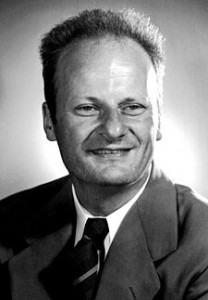
In 1983, the U.S. celebrated 300 years of German immigration to the U.S. This five part radio series was produced to mark that anniversary and includes interviews with historians, scientists, social scientists, musicologists, artists and business leaders. Each part runs five to seven minutes.
The first German immigrants included thirteen Mennonite families from Krefeld in Germany who settled near Philadelphia. They were fleeing religious persecution. By the end of the 19th century some seven million Germans had emigrated to the Eastern or mid-western region of the U.S. Some were fleeing economic or political persecution, others were looking for new opportunities. In the 1930s and early 40s thousands of mostly Jewish intellectuals, professionals and artists fled Hitler’s Germany for refuge in the U.S. Today a quarter of the American population trace their roots to these German immigrants. This series traces the contributions made by the different waves of German immigrants from the professional craftspeople — weavers, furniture designers, bridge builders, iron workers, glassmakers and brewers — to the artists and musicians of the 19th century who founded choral societies, conservatories and orchestras and the scientists and intellectuals of the 20th century who founded scholarly disciplines and established universities, German immigrants have shaped the culture and character of America. And their names are associated with product breakthroughs, engineering and science, music, the arts and humanities: Steinway, Levi Strauss, Anneheuser Busch, Studebaker, Einstein, Bierstadt, Berlitz, Kurt Weill, Gropius, Arendt, Tillich and many more.
Part One: Quantam Physicists and Aerospace Genius
Robert Cohen, historian of science, explains that the Germans — mostly Jewish — fleeing Hitler’s Germany in the early 1930s included some of the most brilliant scientists of our century. Besides Albert Einstein who arrived in 1933, there was James Franck, Otto Stern, Leo Szilard and Hans Bethe. Before their arrival, American science had a utilitarian focus, but that changed with the path-breaking work of these scientists in Quantam physics. But while their thinking was revolutionary, their work would soon embrace a double edged sword. “After they alerted President Roosevelt that the Germans were already experimenting with a nuclear bomb they were encouraged to contribute to the U.S. effort to develop the nuclear bomb through the Manhattan Project.”
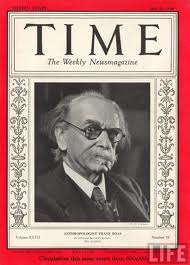
Other German emigres would eventually take the U.S. to the moon. With the arrival of Wernher Von Braun and his team at NASA (the controversial and secret Paperclip program that brought them to the U.S.) the Saturn Five launch vehicle was developed which propelled Apollo to the moon. Walter Weismann, internal communication specialist for the Braun team, explains that Von Braun not only was a brilliant rocket scientist and aerospace engineer, but invented a new management style — as NASA hired thousands of employees, he insisted on an enlightened management structure to circumvent the drag on innovation that comes with bureaucracy.
Part Two: Commitment to Education and scholarship
German immigrants contributed to the earliest educational programs in the colonies introducing the kindegarten, concepts of physical education, and a model for universities and thus molding intellectual life and values. In 1750 a Mennonite schoolmaster, Christopher Dock, wrote the first book of pedagogy while teaching near Philadelphia. In 1827, Francis Lieber, published the first Americana Encyclopedia, a 14 volume set. He would become the first political scientist in the U.S. and wrote the first Code for the conduct of the Army for the Civil War, thus was a pioneer of what have become conventions for the conduct of armies in wartime. In the late 19th century, Berlin born, Franz Boas, began studying the indigenous tribes of the far North and Northwest and founded the study of cultural anthropology becoming the “Father of modern anthropology,” at Columbia University.
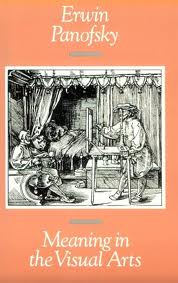 When Hitler’s Nazi Party came to power in 1933, an outpouring of German intellectuals and artists sought refuge in the United States. Their intellectual contributions changed the course of American university study and scholarship as they introduced new disciplines and perspectives. “They changed the way we think about things,” says Lewis Coser, one of those emigre scholars, and at the time of this interview Distinguished Professor of Social Science at the State University at Stony Brook. “American scholarship in the social sciences when they arrived did not have much sense of history. The approach was very pragmatic and positive embracing a sense that all problems could be solved. These European scholars brought existential doubt. After all they had witnessed the most highly cultured society of Europe undermined by fascism.”
When Hitler’s Nazi Party came to power in 1933, an outpouring of German intellectuals and artists sought refuge in the United States. Their intellectual contributions changed the course of American university study and scholarship as they introduced new disciplines and perspectives. “They changed the way we think about things,” says Lewis Coser, one of those emigre scholars, and at the time of this interview Distinguished Professor of Social Science at the State University at Stony Brook. “American scholarship in the social sciences when they arrived did not have much sense of history. The approach was very pragmatic and positive embracing a sense that all problems could be solved. These European scholars brought existential doubt. After all they had witnessed the most highly cultured society of Europe undermined by fascism.”
Harry Bober, Professor of Humanities at NYU’s Institute of Fine Art, explains how Erwin Panofsky transformed the discipline of art history. “He introduced the idea that the subject of art can not be separated from style.” Other German emigre scholars introduced musicology. Erik Erikson made a huge impact in the field of psychology and Kurt Lewin introduced the discipline of social psychology. Others made profound contributions to the study of economics, history and philosophy. They ranged from conservative to neo-Hegelian thinkers. The Frankfurt School — a collective of progressive scholars who were re-thinking Marx — included Theodor Adorno, Max Horkheiner, Herbert Marcuse and Eric Fromm. These intellectuals profoundly influenced the New Left in the U.S. Hannah Arendt, who worked outside academia, wrote prolifically, challenging our political thinking.
Part Three: Dissenters, Activists, Socialists, Trade Unionists, Publishers, Theologians
The earliest German immigrants to the American colonies in the late 17th century were religious dissenters — Mennonites — who settled in the Philadelphia area. LaVern Rippley, author of The German Americans and professor at Univesity of Minnesota says that “by the time of the American Revolution, the numbers of German immigrants was so great that new laws were printed in German.” John Peter Zenger published the first independent weekly newspaper in 1733 — The New York Weekly Journal and became involved in a seminal court case defining press freedom as essential for a democracy. John Peter Muhlenberg, known as the fighting pastor during the American Revolution, became a U.S. Congressman and Senator and vice-governor of Pennsylvania after the war. Prussian born, Friederich Wilhelm von Steuben became Inspector General of the Continental Army in the American Revolution and George Washington’s Chief of Staff during the last months of the war.
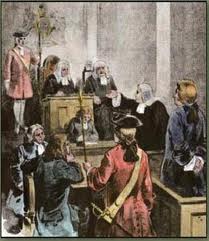
During the 19th century some 5 million German immigrants arrived in the US. settling in the Eastern and Mid-western states. Many wanted little to do with politics, but rather wanted only to preserve their language and life around their churches. But, according to Bruce Levine who teaches in the Workers Education program at City University of New York, “after the collapse of the 1848 revolution in Germany, many highly skilled craftsmen, artisans and urban emigres arrived in Chicago, Cincinnati, Milwaukee, St. Louis, and New York with experience with worker’s collectives.” Frederick Hecker spread ideas about socialism, equality and a free press. Levine explains that Wilhelm Weitling and Joseph Weydemeyer organized the International Workingmen’s Association in 1869, the pre-cursor to trade unions. Socialist and communist ideas were readily discussed in their meetings. And the membership was predominantly German-American.
By the Civil War German immigrants were moving up the army ranks. Carl Schurz, who had been an activist in the German 1848 revolution, became a General in the Union army during the Civil War and later a statesman and reformer.
The German language and press flourished in the U.S. But with WWI that all changed. With anti-German sentiment on the rise, German-Americans began assimilating rapidly to avoid accountability for German’s aggression in Europe. With the rise of Nazism and WWII that process accelerated. Meanwhile, the emigre intellectuals fleeing Nazi Germany contributed to the re-shaping of intellectual life in the U.S. Their studies looked at technology, sexuality, fascism and the authoritarian character among other subjects. Hans Morganthau shaped post-war international relations and foreign policy thinking and was a critic of American involvement in the Vietnam War. Paul Tillich became the most influential Christian theologian of the 20th century with his books, Courage to Be and Dynamics of Faith; and Herbert Marcuse — an analysis of culture. Paul Breinis, explains the impact of Marcuse’s thinking on the New Left as he rejected the celebration of technology as the pinnacle of progress, “My generation developed deep doubts about materialism and consumerism. Marcuse made sense of our doubts and wonder.”
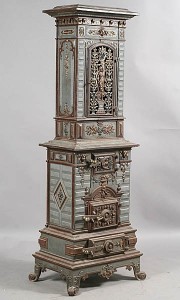
Part Four: Artists and Artisans
“German immigrants retained their customs of decoration from painted brides chests to other objects that marked the rights of passage of their lives,” says Beatrice Garvin, curator of Philadephia Museum of Art’s Exhibit of Pennsylvania Dutch crafts. “They brought a rich array of artisanal skills from the old world. Germantown near Philadelphia was founded by linen weavers. Others were rifle-makers, and their iron stoves were beautifully crafted and glassware. They were trained in the Guild system of Europe.”
During the 19th century some five million Germans made their way to the United States bringing their honed skills and crafts, introducing new strains of wheat, designing bridges, establishing breweries, founding choral societies and orchestras and making innovations in printing. German landscape painters spread across the continent capturing the spirit of this new country in the romantic vocabulary of the era. Art historian, Analise Harding, explains the influence of the Dusseldorf school of painters, like Emanuel Leutze who painted “Washington Crossing the Delaware.” Another German immigrant, Albert Bierstadt, also expressed “the roaring spirit” of the time in huge orphic landscapes of the American “wilderness.”
Thomas Nast, a political cartoonist of the late 19th century penned our present day concepts of Uncle Sam and Santa Clause.

In 1920s Berlin, the Bauhaus collective revolutionized architecture, furniture design, painting and graphic design. With Hitler’s rise they fled to the U.S. and helped shape design for the 20th century. Walter Gropius, Mies Van der Rohe and Marcel Breuer left a lasting impact on our city scapes and how we live. “They knew something was wrong with design in the early 20th century,” says Bauhaus textile weaver, Annie Albers, “we wanted to get rid of ornamentation and return to elementary forms and the purity of design.” Annie’s husband, Bauhaus painter, Joseph Albers, developed color theories that influenced generations of students in the U.S. from their base at Black Mountain College in North Carolina.
Part Five: Music – from Choral Societies to Orchestras and Cabaret
Each wave of German immigrants to the U.S., beginning in the late 1600s and continuing into the 20th century, brought sounds for the heart and soul. Bach’s music was first performed in the U.S. by the Moravians in the 1700s. They also established the first music school in the country. While those who settled during the colonial period brought music through their hymn books and organs. During the massive wave of immigration in the 19th century, German communities formed choral societies everywhere.
Theodore Thomas, a musical missionary from Germany, was a talented violinist, founded his own orchestra to tour the country and became the conductor and musical director at the New York Phiharmonic. Leopold Damrosch, founded the Oratorio Society in the late 19th century, toured the country with orchestras introducing all the major German composers and was one of the founding leaders of the Metropolitan Opera. He son, Frank, a dedicated musical educator, was a founder of what would become the Juliard School. His other son, Walter — both were German born — followed in his father’s footsteps as a conductor and director at the Metropolitan Opera and the Symphony Society as well as convinced Andrew Carnegie to build Carnegie Hall.
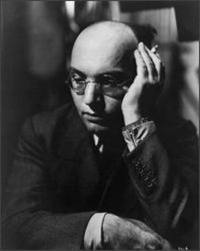
In an interview with Henry Englehardt Steinway, a descendant of that family, we learn that piano manufacturing has been almost an exclusive German domain. In the founding years of the Steinway company, they brought European performing artists to tour the U.S.
Over the years we associate great conductors with German names: Bruno Walter, Kurt Adler, Otto Klemperer are only a few. Everywhere across the country German immigrants founded opera houses, orchestras and music schools. In the 20th century German emigres revolutionized film music. and nobody struck the hearts and minds of Americans in the popular genres like Kurt Weill.

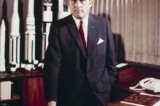
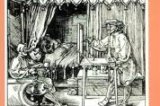

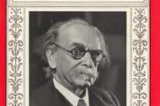

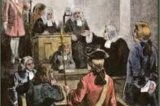
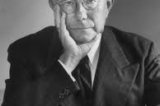


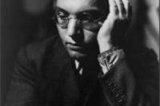
California Gold Rush, 1848 – 54: Hundreds of thousands of German immigrant in the areas of San Francisco, Auburn, Grass Valley and Sacramento. It was not only gold seekers, including crafts. From Hamburg Port. Millions until 1934.
The emigration in 1848: Poverty in Germany, adventure, wanderlust. The Germans were not only prospectors for “gold in the Sierra Nevada”. Even farmers, carpenters, brewers, as the French fur traders. Emigration from 1848: Poverty in Germany, adventure, Lust for hiking.
Reasons for emigration: emigration letters / documents. Present for centuries. Dominated material interests or Western romanticism. Share of this: F. Cooper, J. London and other famous writers. They were read in Europe.
Literatur new: “The gold of the Sierra Nevada,” AAVAA-Verlag, Berlin, 2012. Lectures in 2013 in San Francisco: Classic immigration.
1848 – 54: Europe – Atlantic – New Orleans …
Covered wagon: Louisiana, Texas, New Mexico and Arizona – through Indians-territory and difficult terrain. Often long periods of rain, dead due to illness.
Gold Nugget at Sawmill:
Headlines in the press Europe 1849? For the miners too late. Gold seekers from neighboring countries: already eliminated most of the gold.
California Gold Rush:
It began one of the largest migrations in the United States. The emigrants accepted the American culture.
Literature: “The Gold of the Sierra Nevada”, publishing aavaa Berlin, 2012 or “Das Gold der Sierra Nevada, AAVAA-Verlag.
( The Life of the prospectors, life of the Indians)
2012 and 2013 new educational trip to California: Gold Country Museum, Marshall Gold Discovery State Historic Park and Goldene Drift Museum …
Museum/buildings:
Are very important witnesses – Lifelike and authentic.